![]()
As the name of the filter alludes to, these lens filters do indeed lower the overall contrast of a shot. To clarify what that means in relation to photography: these filters will reduce the darkness of the shadows by allowing light to bleed into them from surrounding highlights.
From the example images below, you should get a very good idea of what the low contrast filters do:
![]()
![]()
Both of these example images are taken with exactly the same camera settings and are displayed straight out of camera. So although they’re shot with the same settings, the image with the low contrast filter clearly has a certain subtle glow, or haze effect.
Now that we’ve established what they technically do, let’s look at how low contrast filters actually translate into practical uses.
Low Contrast Filters – Past to Present
Historically, lens filters were always far more popular than they are now. The obvious reason for this decline is thanks to the proliferation of post-production techniques and all the options and flexibility that working on images after they’ve been captured offers you.
Years ago, low contrast filters were often used to give skin a certain ‘glow’ and to also flatter some of the skins imperfections. Remember, this was in a time before ‘retouching’, anything that softened or hid those minor lumps and bumps in camera was extremely useful.
But, low contrast filters are seemingly making a comeback as the cameras and lenses being made today are simply ‘too sharp’ for some projects. For example cinema and T.V. still use lens filters a lot and the low contrast filters are often used on period pieces where the razor sharp images of modern cameras simply feels out of place in many historical dramas.
Low Contrast Filters in Action on the Screen
The Crown
Cinematographer Adriano Goldman spoke about his particular visual look for the hugely successful Netflix show “The Crown.”
“The show uses the Sony F55, Cooke Panchros and, often, Tiffen Glimmer Glass.”
-Adriano Goldman

Many shooters will often tell you how unbelievably sharp their lenses are, and “unbelievably” sharp is the right verb here. Many lenses are indeed “too” sharp and clear for some projects and Goldman uses the Tiffen lens filter for beautiful effect in the Crown series. For those unfamiliar with the filter, here’s how Tiffen describes what their Glimmer Glass does.
“Тhе multіfunсtіоnаl dіffuѕіоn/bеаutу Тіffеn 4х4 Glіmmеr Glаѕѕ 1 Fіltеr hаѕ thе аbіlіtу tо bоth ѕоftеn thе fіnе dеtаіlѕ іn аn іmаgе, аnd рrоduсе glоwіng hіghlіghtѕ. Рrоvіdіng а mіld rеduсtіоn іn соntrаѕt, іt сrеаtеѕ а mоrе еthеrеаl іmаgе.”
-Tiffen
Peaky Blinders
Another example of a period piece using low contrast filters “in-camera” during shooting is the gangster epic show “Peaky Blinders.” Those familiar with the show will no doubt be aware that this is a polar opposite show to “The Crown,” but the atmosphere and depth a low contrast filter can add to visual storytelling is universal.
Director of photography Si Bell goes on to speak about the look of the show and what they were keen to achieve.
“A Tiffen 1/4 black satin filter was deployed most of the time with NDs and rotating polarisers just to take the shine and reflections off certain things.”
-Si Bell
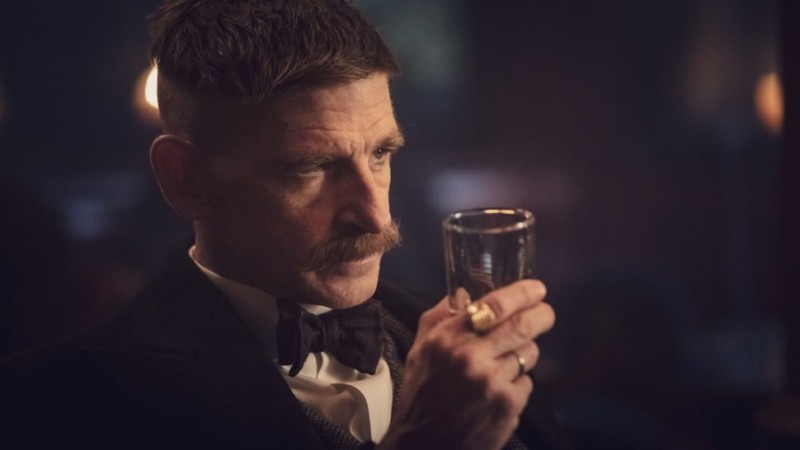
Bell mentions the use of a Tiffen “Black Satin Filter.” Not familiar with that filter? Here’s what Tiffen says it does.
“Тhе Вlасk Ѕаtіn fіltеrѕ gеntlу соntrоlѕ hіghlіghtѕ, rеduсеѕ соntrаѕt аnd аddѕ а grіttіеr, wаrmеr lооk thаn rеgulаr Ѕаtіnѕ, whіlе ѕuррrеѕѕіng fасіаl blеmіѕhеѕ аnd wrіnklеѕ.”
-Tiffen
There are many, many more example of this in modern television and if you were so inclined, you could simply Google “insert TV show name + camera setup” and you’d be astounded to see how many shows actually use some form of low contrast filter on their lenses.
I had a hunch that The Crown and Peaky Blinders used them, Googled it, and boom! They did. Trust me, the list of modern cinematographers and directors of photograph using these filters on their lenses is huge. In fact, it’s possibly more common than ever before and that is in part due to the rise of incredibly sharp digital camera and lens technology.
It’s worth nothing here that many of these shows will often introduce artificial atmospheres to their sets like smoke and haze, and although they produce a very similar look to the blacks as the low contrast filters, the haze and smoke is far harder to control and it doens’t help the highlights.
Many of these media productions want huge files for 8k televisions and theatre screens, but many cinematographers in the early 2000’s were hesitant to switch away from film as the digital options lacked a certain character and richness. These low contrast lens filters, along with a host of other ‘in-camera’ filters can take an edge off a heavily digital look that is often far more appealing to audiences. To further cement this point, I was also reliably informed that Tom Cruise refused to be shot on the more modern digital cameras as they were too unflattering.
Low Contrast Filters in Photography
So now that I’ve shared a couple of examples of how low contrast filters are being used in pop-culture, you should be a little more receptive to the idea of actually using an in-camera technique that involves lens filters yourself. If shows like The Crown or Peaky Blinders, that seemingly have an infinite budget are using lens techniques over post-pro hacks, maybe there’s something to them.
Like I mentioned at the top, photographers have been using low contrast filters forever and even before cinema was, but their popularity has waned, especially in portraits. Of course there’s still a market for them and any self-respecting landscape shooters would never leave home without one.
Imagine you’re a landscape shooter and you’ve set up your shot ready for that perfect sunset. The sun dips down low and now everything is heavily silhouetted with that big hot-light in the sky behind that gnarly old tree you wanted to photograph.
Sadly you can’t just whip out a spare fill light to pop some light in that deep shadow, so you can either go for the silhouette shot, or you can give your raw file some extra detail in the shadows by popping a low-contrast filter on the lens. The filter will scatter just enough light into the shadows thereby giving you a little extra detail in those shadows where you previously had none.
Seems an obvious solution, but this basic principle is sorely overlooked by portrait shooters. I so often see some heavily backlit shot where the highlights are so horrendously blown out as the photographer has increased the exposure to see detail in the foreground shadows. But as we also previously discussed, this is actually a modern problem.
Is your lens too good?
This is clearly subjective, but hear me out. Years ago lenses were good, but they weren’t quite as crystal clear as they are today. As a result, some older or even vintage lenses have a sort of low-contrast filter built into them. Their glass naturally scatters light that enters them and we see some of the tell-tale signs of halos and glowing edges associated with some of the modern low-contrast filter shots.
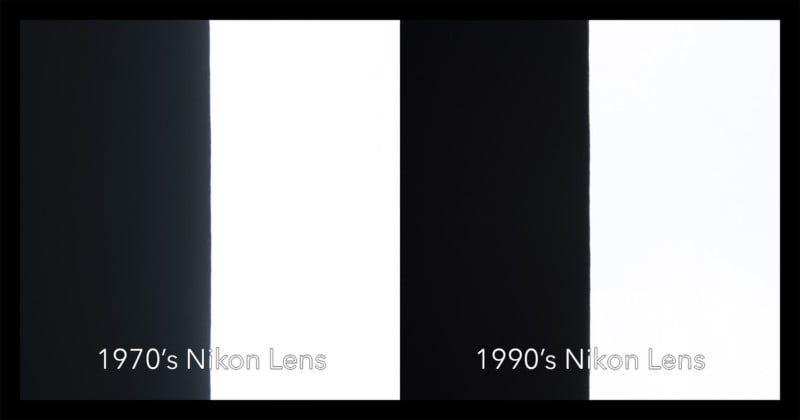
You should be able to see what I mean from the shots above. A modern lens provides a very clean and clear edge between light and dark and the shadows are all but jet black throughout the shot. For many of us, that’s what we want, but there’s still a place for that older lens look too. To me it feels a little more organic and truth be told, it actually feels a little more “real.”
Technically Perfect, But Not Realistic
Most lens technology is now so good that it actually far surpasses our own eye quality. When I look at the sun or a bright light, there is a glow around it… do I need to upgrade to the pro version?! The older lenses and the more modern low-contrast filter “look” actually feels more reminiscent to us as this is how we would visually see the world in real life! This is one of the key reasons we see it so much in cinema and T.V.
Examples of Low Contrast Filters in Action
Let’s be honest, I’ve been pretty defensive up until this point. If you’ve read this far then you’ll undoubtedly be surprised that I’ve firstly not tried to sell you anything yet, but secondly, I’ve yet to show you any results of low-contrast filters in action with portraits. The reason for this is that the vast majority of photographers simply write off lens filters as “Photoshop for old people.”
Yes there are lens filters that can be replaced by Photoshop actions and filters if you want, but I honestly believe there is no short-cut or Photoshop hack for what low-contrast filters do.
“Can’t I just reduce the contrast in Photoshop though?”
No. The low contrast filter is doing far more than simply “lowering the contrast.” With a lens filter like this, it’s actually scattering the light as it enters the lens and as a result you’ll have far more detail to work with in supremely contrasty images.
“Sounds good. I’ll use it for every shot!”
No. Please do not use it for every shot, or even most of your shots for that matter. The low contrast filter has a very specific use and that’s often for heavily backlit images where the light, or multiple lights is set against far darker subjects like silhouettes or where we have a lot of strong directional light just out of shot pointed towards to the camera.
Example 1 – Strobe just out of shot pointed at camera.


This image has no bare bulb or direct highlight in shot, but it does have a blue light just out of shot to camera right pointed over the subjects shoulder, plus it had a red bulb just out of shot in that lampshade.
Both of these shots were processed in the same way, but it should be clear to see the very significant difference between the two shots. In the image with the low contrast filter we have more detail in the shadows and although we’ve chosen to not pull out too much of that detail (look at the fabric on the jacket lapel for example), it’s there.
Also, look again at the highlights. At the very top of frame where the light is brightest in the image with the no low contrast filter, the lamp with a red bulb has lost nearly all of its colour in the brightest areas. Compare that to the shot with the filter and you see not only more detail, but a lot more colour too.
Example 2 – Heavily back-lit by natural light.
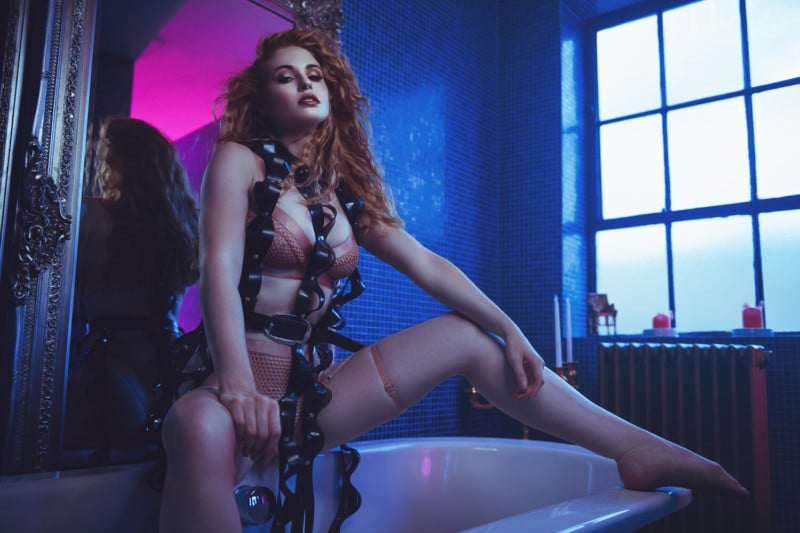
Here we have a mix of strobe and natural light. It’s worth noting that the majority of this set is lit by that very bright natural light window to camera right. I’d also like you to consider how much light is appearing in the shadows of this room. Look at the corners and the area around the window. I have no light pointed at that due to absurdly limited space, so instead I opted to use a low contrast filter on the lens to “simulate” the effect of light being in the dark areas.
…and because I know there’s already a millennial in comments typing about how they’re “entitled” to see the raw file! Here’s a couple of test shots below where I experimented with the low contrast filter on and off the lens.
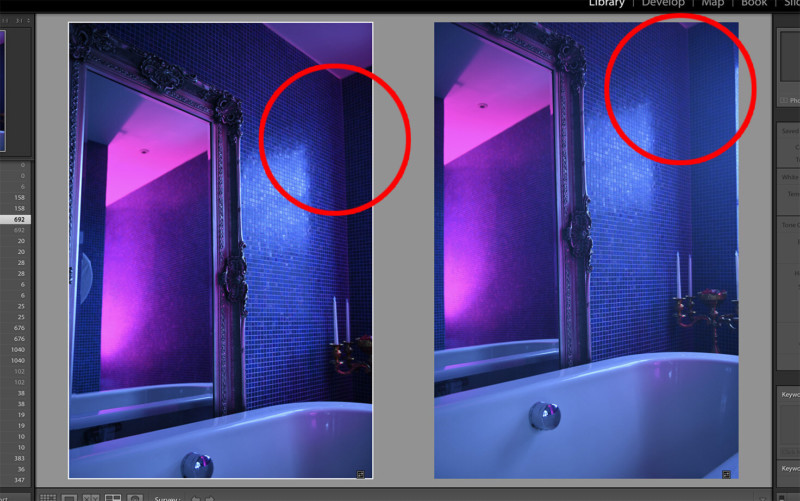
Again, it should be extremely clear to see the difference between these shots and just how much that low contrast filter is doing to the shadows in the image. You have to remember that this filter is giving you options.
If you want to pump the contrast up a little later on in post then you can do. But me not using a low contrast filter here would have been detrimental to the shadow detail in the final shot.
Example 3 – Strong strobe backlight behind subject.
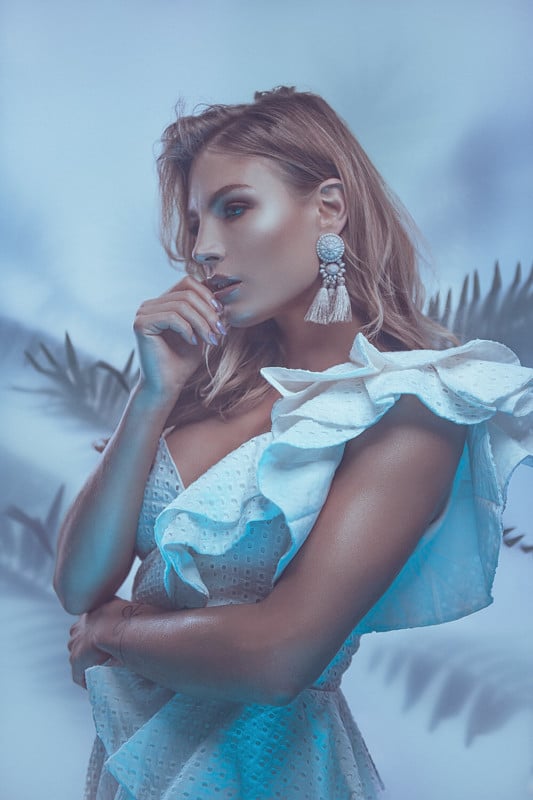
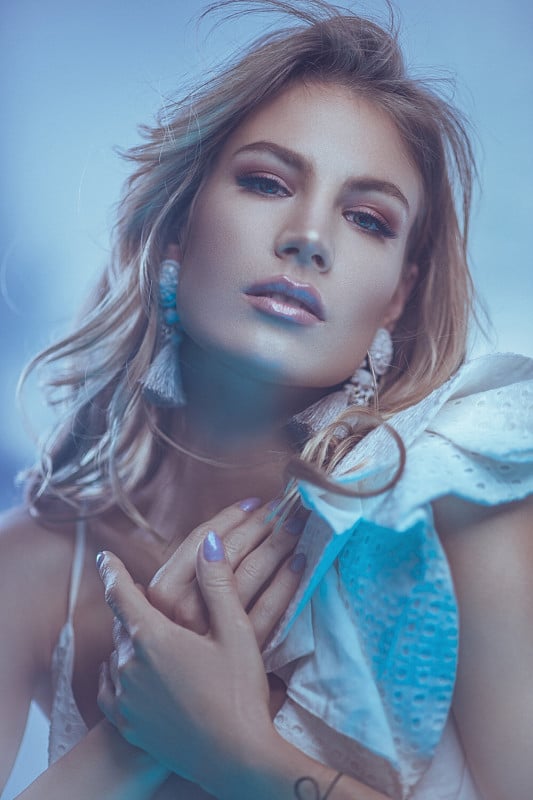
This particular setup was built around the fact that I knew I wanted to use a low contrast filter on my lens. Behind the subject we have a large softbox that covers the entirety of the background. This understandably kicks a lot of light directly into the camera and I knew that if I used a low contrast filter on the lens here, it would create this slightly hazy effect that nicely mimicked the hazy plant effect we had behind her.
If you’re interested in learning more about this particular setup in detail, it’s fully explaining here.
Are you curious to see what the low contrast filter is actually doing? Take a look at the side by side below, with and without the filter.
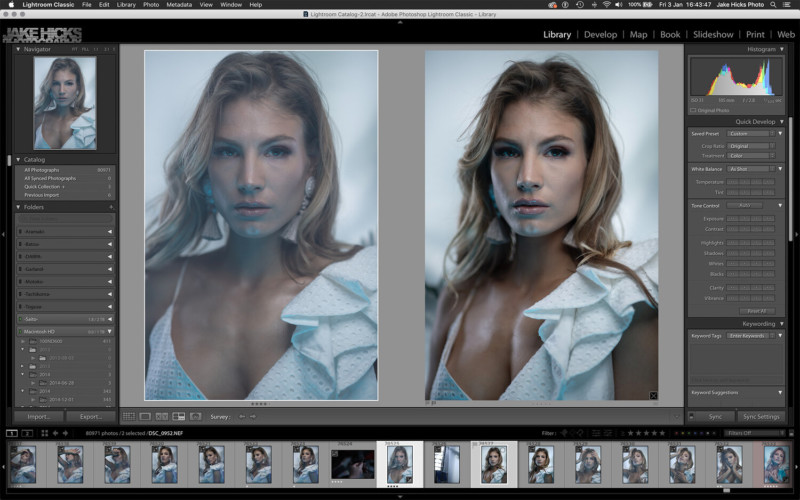
You get the idea now?
With these three examples, you should now have a pretty strong idea of exactly what these low contrast filters do.
Bottom line: they aren’t for everyday use. In fact, these filters will not even work in every situation. For example, if you have zero light coming straight into the lens, or you have no bright highlights in shot, you could have the low contrast filter on the lens and not even know it.
This is a very situational filter but it can have such a huge impact on your shots if you use it correctly.
The Low Contrast Filter I Use
I personally use a pack of Low Contrast filters from LEE Filters. The pack comes in a range of strengths from a 1/4, 1/2, 3/4 and 1. The number 1 offering the most dramatic effect. Truth be told, I’ve not used any of the other brand low contrast filters out there to compare and as you probably noticed from the start of the article when we looked at examples in TV shows, there’s a ton of them by other brands that seemingly do the same thing.
The LEE ones I have work for what I need, but if you want to dig into the low contrast filter options further, you’ll be looking at variations in how they deal with highlights, halos, glow, sharpness, diffusion and more. Trust me, the variances in low contrast filters is a full time job in its own right.
For more details on the ones I use, take a look on LEE’s site here.
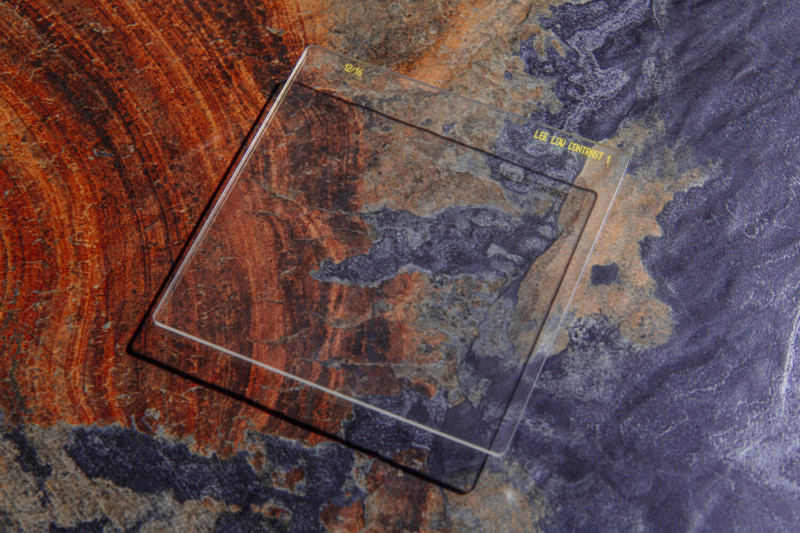
![]()
![]()
I personally just hold mine in front of the lens with my hands for the shots that I need them for, but you can get a holder that will attach to any size lens you have. I personally prefer this method over the circular screw on ones as I can switch lenses during a shoot without having to buy lens filters for each of them.
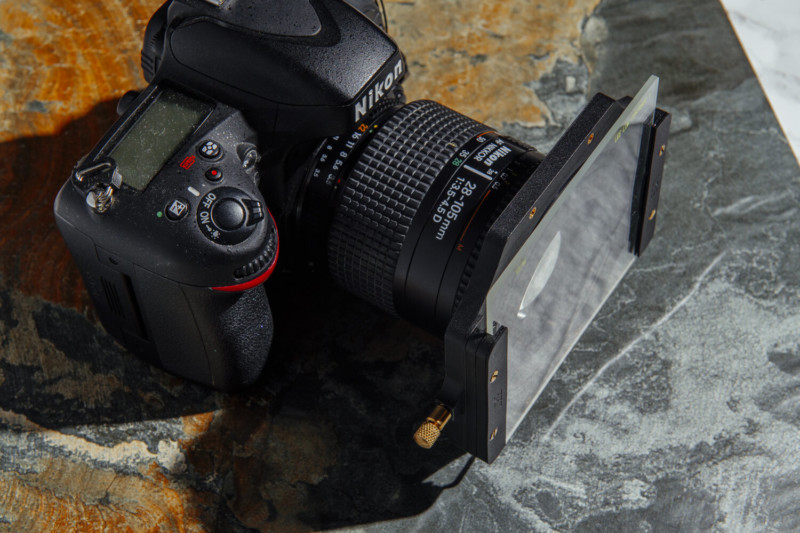
Frequently Asked Questions
Is it blurry?
I can hear you now,
“But do low contrast filters blur or soften my shot?”
The reason I know you have that question, is because I asked it too. Technically I guess yes, anything in front of your lens will potentially “soften” your shot. I’ll be totally honest though, I can’t see it.
Granted, these slightly more expensive ones from LEE are of exceptional quality and you get what you pay for, but from the tests I’ve done, these filters do not “blur” the shot to reduce contrast. Take a look at the zoomed in shot below to make your own judgments though.
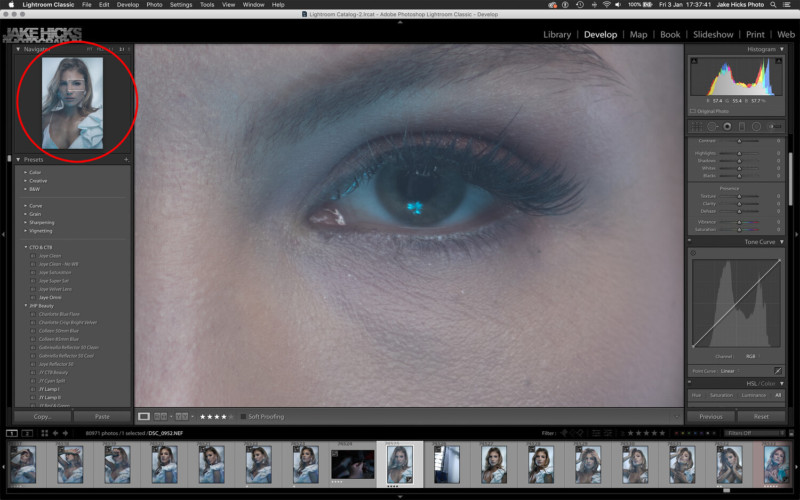
I showed you this shot earlier in the article and this was one of the test images I took with the low contrast filter in place. You’ll notice that everything is still very much pin-sharp. Also note that we have that very bunched up histogram in the top right of frame. This is showing us that all the data is very much in the middle and this is what we’d expect to see from an image with less contrast.
Low Contrast or Diffusion?
Long time followers of my work will no doubt know that I also regularly use another lens filter called a “diffusion filter,” aka a “soft filter.”
The low contrast filter is very different and you should not expect to simply use a diffusion filter in its place. Think of a diffusion filter causing a more focused area of flare. A low contrast filter will evenly spread the light over the entire scene compared to the more focused flare of the diffusion filter.
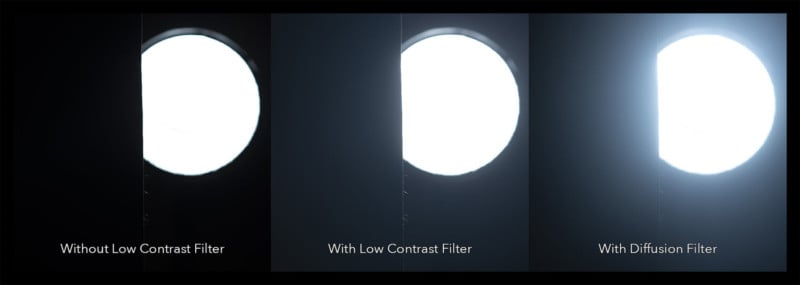
I’d be wary of using your diffusion filter as replacement for the low contrast filter. You can see from the images above that the diffusion filter is far more aggressive. It has a brighter centre point next to the highlight and it drops off to shadow far quicker.
Don’t get me wrong, diffusion filters have their place, but consider them for more of a “dreamy” look, where as the low contrast will provide more of an “atmospheric” look.
Closing Comments
The short version here is that I recommend everyone has a low contrast filter if you can afford one.
This goes doubly to the mirrorless users who have systems with their painfully sharp files. Yes, you may love the razor sharp images where you can see the DNA in the pores of your subjects, but consider what your subjects and clients may also like to see as well. I personally think that although sharp images are fine, there are times where many creatives are trying to put a little more “soul” and realism back into their shots.
For example, I could go into more detail on how the video games industry spends millions each year on developing purely artificial in-game lenses with bokeh, halos, fringing and diffusion in an attempt to make us feel more “immersed” in a synthesised world.
That entire industry strives to make their imagery look less artificial and I find it odd that as one art form struggles to trick us into being immersed with visual artefacts, another simultaneously strives to make things feel hyper-real by removing all trace of them.
![]()
Older readers may also recall the era when “Industrial Light and Magic” specifically strived to create these “visual-effects” in films like “Star Wars” and “Close Encounters of the Third Kind.”
These are of course “styles” and although JJ Abrams may have famously overdone the infamous lens flare a little in his more modern work, the fact still remains that there’s huge scope to get away from this purely crystal-clean and perfect look the entire time.
![]()
![]()
No, video games and movies are not photography, but it’s always advisable to look outside of our own industry to see how others deal with similar aesthetics and what trends are emerging.
A New Generation
It’s also worth noting that we’re starting to see the first generation of photographers that are coming of age who have never used a film camera before or have even seen one! Feel old yet?!
As with everything else, fashion and styles are often cyclical to new generations that come along behind us. I guarantee young people will fall on these old film “effects” and claim them as new and original (which they are to them). I’m calling it here and now, but don’t be at all surprised if you see a resurgence in these “in-camera” looks with photography as we see young photographers emulating looks they see in gaming and cinema.
Lens filters like low contrast filters are a tool and unlike JJ, we should use them sparingly. But in the right situation, these low contrast filters can do what no Photoshop filter can do and we need to have them ready to hand when the situation presents itself.
About the author: Jake Hicks is an editorial and fashion photographer based in Reading, UK. He specializes in keeping the skill in the camera and not just on the screen. If you’d like to learn more about his incredibly popular gelled lighting and post-pro techniques, visit this link for more info. You can find more of his work and writing on his website, Facebook, 500px, Instagram, Twitter, and Flickr. This article was also published here.

